Learn exactly what you need to begin sewing with this is the ultimate guide to sewing essentials for beginners, including must-haves and nice-to-haves.
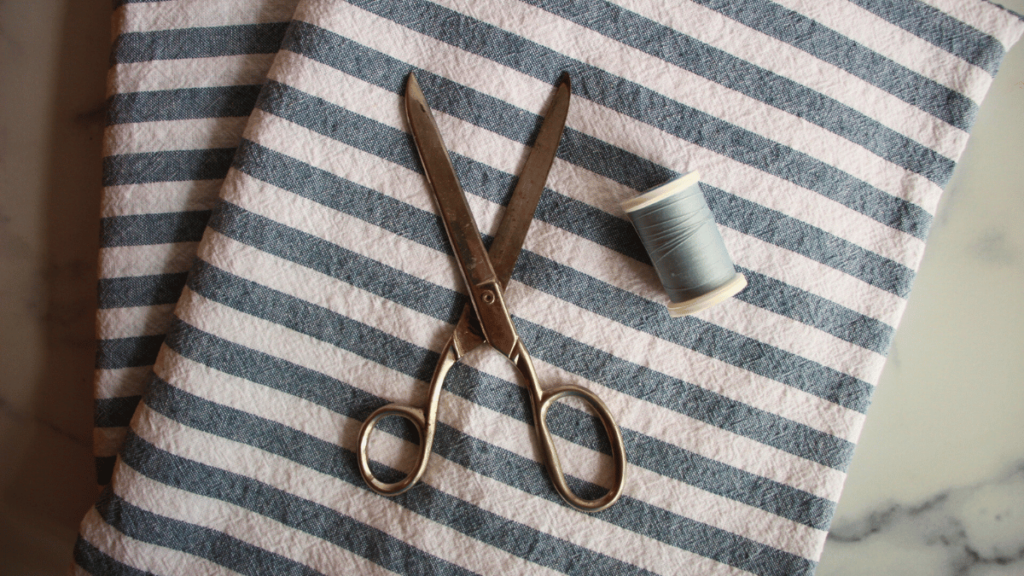
In the beginning of 2020, in the midst of the world shut down, I made the decision to teach myself how to sew. So, I borrowed my mom’s old Brother sewing machine and got to work. I first decided I wanted to sew masks for my family and friends that needed them, but it quickly morphed from there. Although the beginning of my sewing journey was a huge learning curve that came with some frustrations, I continued experimenting with different projects and it has continued to bring me joy five years later. In fact, not only do I share sewing tutorials here on the blog, but I’ve also started a selling my handmade sewn goods on Etsy!
When it comes to the sewing essentials for beginners, there’s really not a lot you need, and for many years I operated with very few tools. Over time though, I’ve discovered a few more items that are really super helpful that can take your sewing to the next level. Of course with any hobby, you can really go all out, but in this guide, I’ll share with you the absolute essentials and some nice-to-haves to get your started on your sewing journey.
PIN FOR LATER!
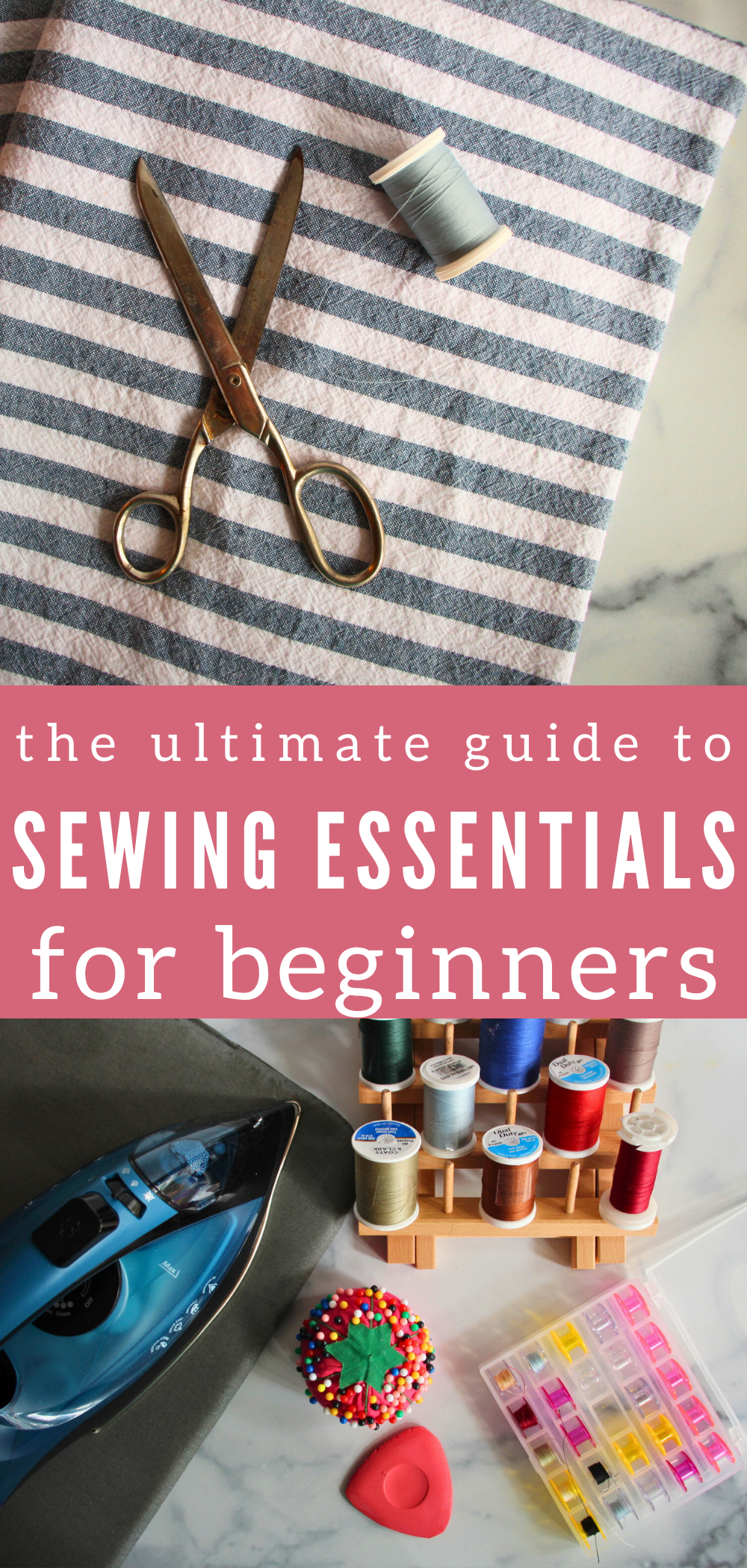
This post may contain affiliate links, which means I may receive a commission, at no extra cost to you, if you make a purchase through a link. Please see our full disclosure here for further information.
Sewing Machine
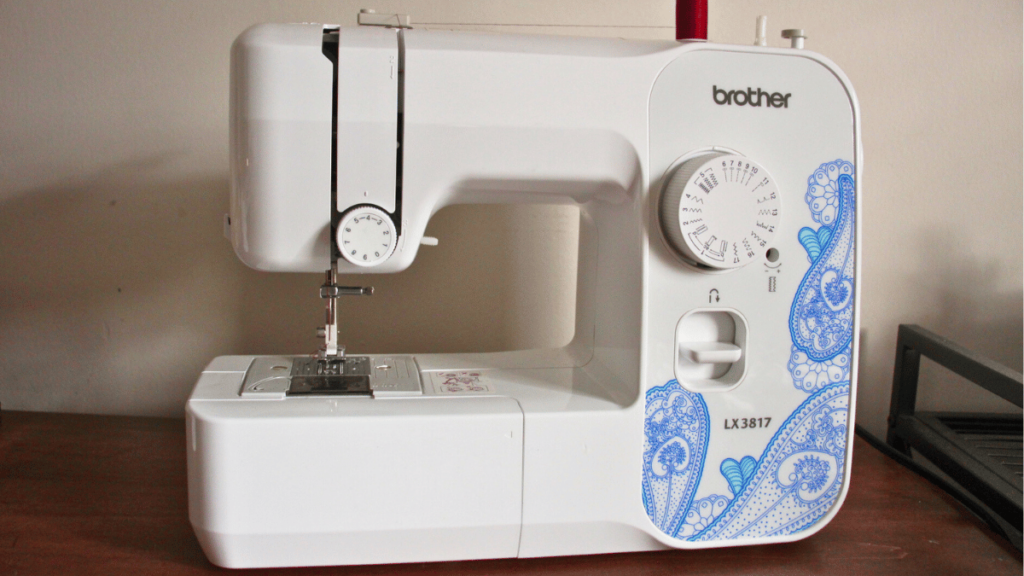
The first step in your sewing journey is to choose a sewing machine. To begin, you really don’t need anything fancy. A basic sewing machine can do most, if not all of what you need and you don’t have to spend a fortune. Here are some options to acquire a sewing machine to get started:
Option 1: Friends and Family
Before considering a new machine, I would first check with your friends and family to see if any of them either have a sewing machine they’d be willing to let you borrow to see if you enjoy sewing, or one that you can have either for free or for a cheaper price. You’d be surprised how many people buy sewing machines or acquire them that they literally never use.
Option 2: Thrift Stores
I’m a frequent thrifter and I always see sewing machines being sold at thrift stores, usually for $20 or less. The only kicker is you don’t really know the condition of the machine. You often can test electronic items at the store to see if they work, but it’s not a guarantee the machine will be in good working order when you get it home. However, if you’re willing to take the chance and maybe do a little work on the machine, then this could be a great option!
Option 3: Facebook Marketplace
Similar to option one, there are many people that buy sewing machines, never use them, then try to get rid of them via Facebook Marketplace. I have a family member who recently got into sewing and found a sewing machine, sewing tools and fabric, all for $50! That’s a complete steal and it worked out really well for her! So, if you do some hunting online, you can find really amazing deals on new or close to new sewing machines for the fraction of the price.
Option 4: Brand New Sewing Machine
For those who decide to get a brand new machine, then this Basic Brother Sewing Machine is what I currently use and recommend. Here are a few of my favorite things about this machine:
- It’s under $100, which is really affordable for a brand new sewing machine.
- This machine can be found on Amazon and Walmart, so it’s easily accessible for most people
- It will do most, if not all the stitches you need to do your sewing projects, especially beginner sewing projects.
- It’s on the smaller side, which works great for small spaces, and is lightweight.
Cutting Tools
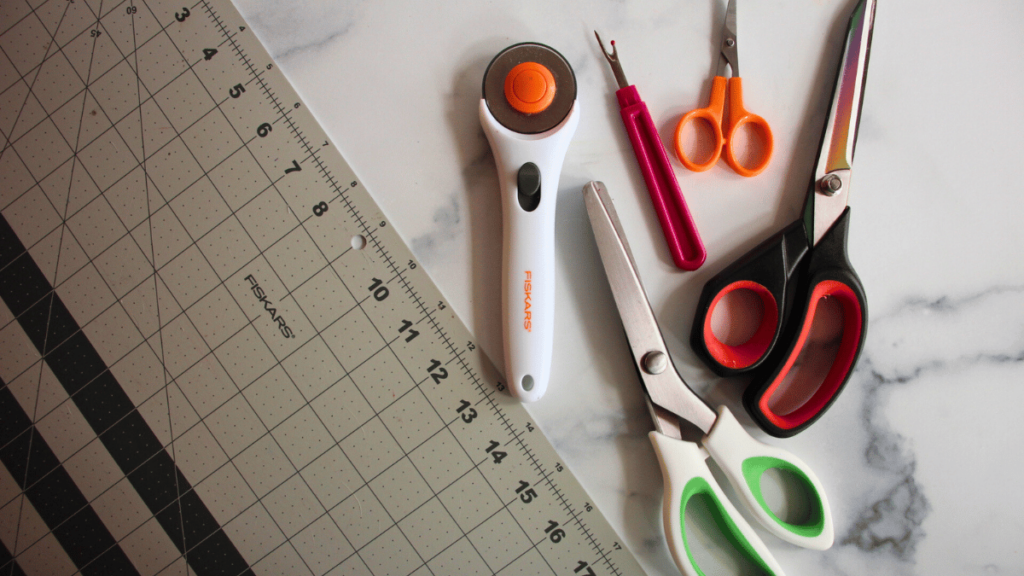
Need to Have Cutting Tools
- Good pair of sharp scissors
- While you can use really any pair of scissors when it comes to cutting fabric, I highly recommend buying some that have longer blades and are sharp/meant for cutting fabric. It will save a lot of frustration and you can get good scissors for relatively cheap.
- Seam ripper
- A seam ripper is ESSENTIAL when it comes to sewing, especially when you first start out. You’re going to make mistakes, something is going to go wrong and you will need to “rip” out the seam and start over. And that’s okay! I like having a regular size one and a smaller one for little projects.
- Small thread trimming scissors
- Having a small pair of scissors to precisely trim threads after you’re done sewing is really helpful to having a clean and finished project. I use a small pair of scissors that have curved blades, which allow you to get really close to the fabric when trimming your threads. While having thread trimming scissors is a kind of nice-to-have, they make the experience a lot better than using big, bulky scissors.
Nice to Have Cutting Tools
- Cutting mat and rotary cutter
- A cutting mat and rotary cutter are great to have to make cutting fabric faster, performing cleaner and straighter cuts and so much more. As someone who sews a lot, I’ve found these two items incredibly helpful.
- Pinking shears
- Pinking shears are great to use to prevent the edges of fabric from fraying and to remove bulk when you’re creating seams.
- Pinking shears are great to use to prevent the edges of fabric from fraying and to remove bulk when you’re creating seams.
Measuring Tools
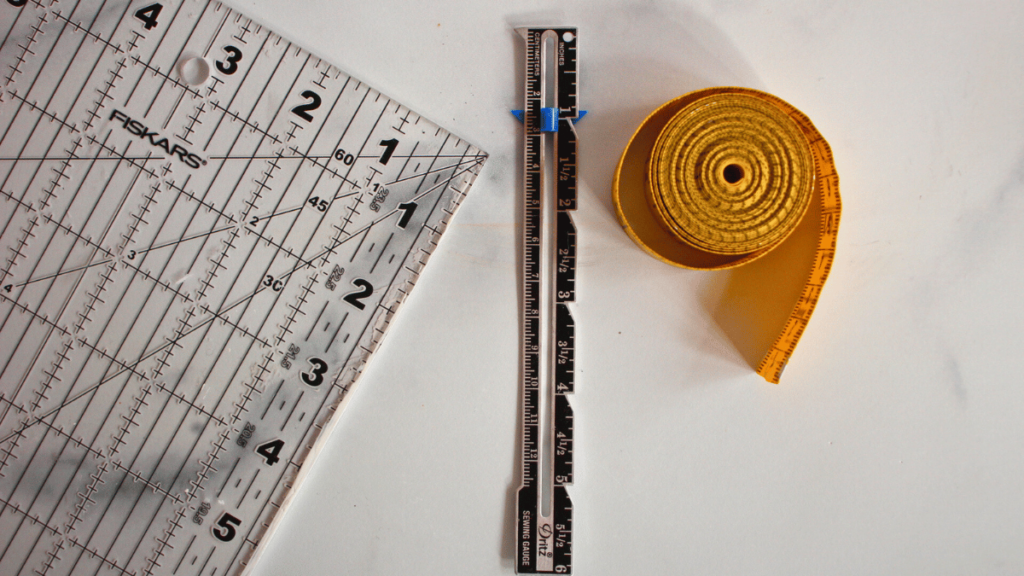
Need to Have Measuring Tools
- Fabric tape measure
- Although you could get away with using a rigid ruler, I highly recommend using a flexible fabric tape measure to measure your projects. It makes it easier to measuring oddly shaped items and is very compact and can be stored in a drawer.
- Sliding sewing gauge
- I had no idea this little $3 gadget existed until about a year ago and it has literally changed the game for me! This sliding gauge measures up to 6 inches and is super useful when you are folding fabric for hemming and so much more!
Nice to Have Measuring Tools
- Large ruler for cutting mat
- This large, rigid ruler is great to use in conjunction with the cutting mat and rotary cutter because it helps create crisp, straight lines. This is especially important if you’re working on a project like a quilt or something where straight and precise lines really make a difference.
Other Sewing Accessories
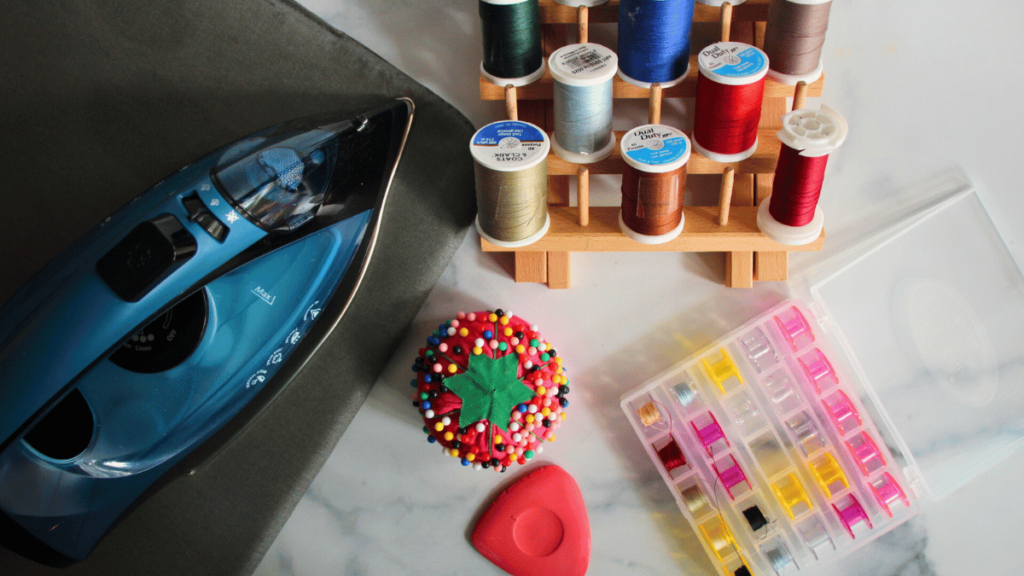
Need to Have Sewing Accessories
- Iron and ironing board
- Using an iron for your sewing projects can take the frustration out of having shifting fabrics when you’re trying to sew and help make your end result more clean and crisp.
- Pins
- Pins are essential when you’re sewing. They’re great for keeping two pieces of fabric together prior to sewing, holding down a hemmed edge prior to sewing, as a marker for when a stitch should end, etc, etc.
- Fabric marking tool
- Any kind of sewing marker, chalk or pen is super helpful when you’re trying to mark where your stitches should go, when you’re cutting out a pattern and many other things. I used to use a pen and that worked too, but having something that can wash away is even better for a more polished project.
Nice to Have Sewing Accessories
- Extra bobbins and a bobbin case
- If you like to work on multiple projects with multiple colored threads, then having extra bobbins on hand, beyond what your sewing machine comes with, can be helpful. AND it’s also helpful when they can all be contained in one small case.
- Thread organizer
- Along the lines of organizing your bobbins, once you accumulate tons of thread, having a way to organize them eliminates clutter. I have a wooden spool holder, which I don’t recommend, but a plastic organization case would be much better!
- Pin cushion or magnetic pin holder
- I love having a pin cushion as opposed to just having my pins in a container because that means less pokes!
- Fabric clips
- While I haven’t purchased fabric clips, they seem really convenient to have and eliminate those holes that pins leave behind in the fabric.
Thread & Fabric
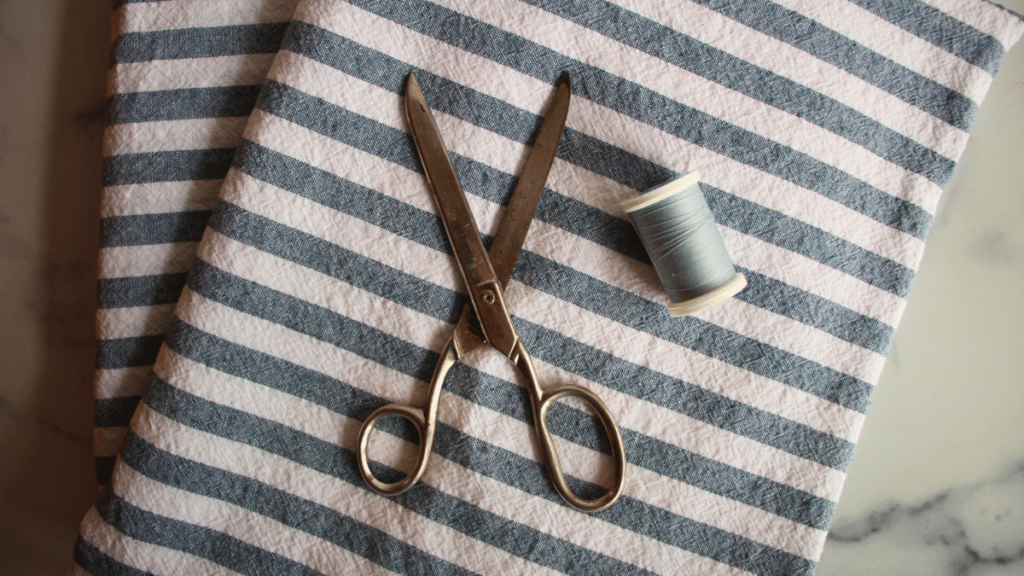
Thread
- To start:
- I recommend using an all-purpose thread. This type of thread will work well for most projects.
- Start with black and white thread when practicing. This will show you how well your stitches look and what you need to work on.
- As you advance:
- I always recommend getting a coordinating thread to your fabric, meaning a thread that matches the most prominent color of your fabric. This will help the thread blend well and the overall look of the project will be seamless.
- When you can’t find a coordinating thread, I always resort to white for lighter fabrics and black/grey for darker fabrics.
Fabric
- To start:
- When you’re just practicing, you can find fabric at thrift stores in the form of bed sheets and things like that.
- The remnant bin in the fabric department of craft stores like Joann’s and Hobby Lobby are another great source of cheap fabric to practice on.
- As you advance:
- The easiest fabric to work with, I’ve found, is quilter’s cotton. This type of fabric is pretty widely available at places like WalMart, Joann’s and Hobby Lobby and presses really nicely, which makes it easy to get nice, straight lines when sewing.
In Conclusion
Starting a new hobby, especially sewing, can feel a little overwhelming. Hopefully this list of needs versus nice-to-haves helps you in your sewing journey. The items in this list are what I use every day in my business and as I continue, I’m sure I’ll find more. But it’s true that you really don’t need a whole lot to start. After you sew for a while, you’ll learn what you like to use and don’t, and what’s necessary for your projects. I hope you found this post helpful and if you have any questions, I’m happy to help!





Leave a Reply